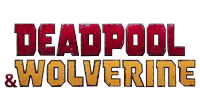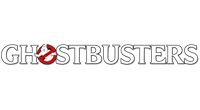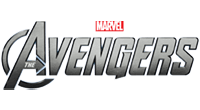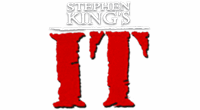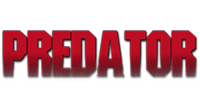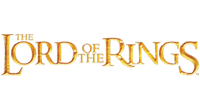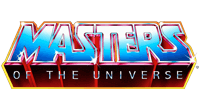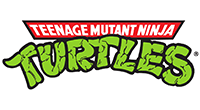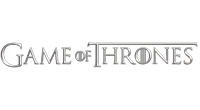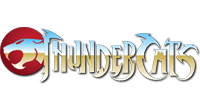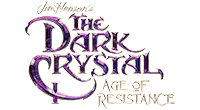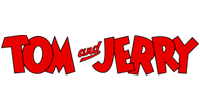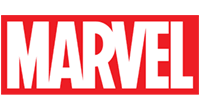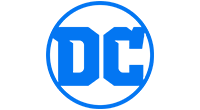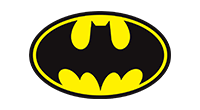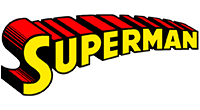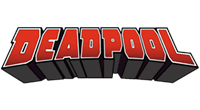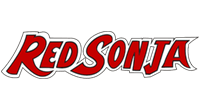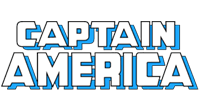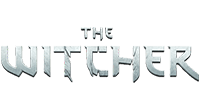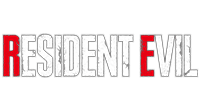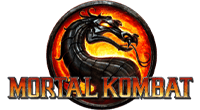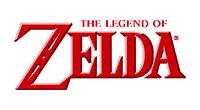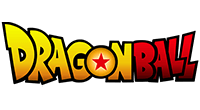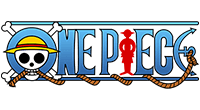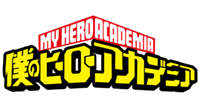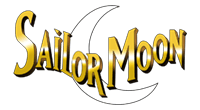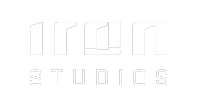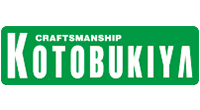News

27.01.2025 • THE OSCAR NOMINATIONS
After several postponements due to the forest fires in California, this year's Oscar nominations were announced on January 23, 2025. The following films are competing for the award for Best Picture of the past year: ANORA, THE BRUTALIST, A COMPLETE UNKNOWN, CONCLAVE, DUNE: PART TWO, EMILIA PÉREZ, I'M STILL HERE, NICKEL BOYS, THE SUBSTANCE and WICKED. You can find all nominations on the Academy's official website:
https://www.oscars.org/oscars/ceremonies/2025
Of course, we are happy for all films and artists that have been nominated. Nevertheless, we were surprised by some of them and also missed some artists. We don't want to comment on all the nominations here and just make a few small notes, especially of course about all the candidates for whom we are keeping our fingers crossed.
We were a little surprised that EMILIA PÉREZ was nominated 13 times, in almost every possible category. This is all the more unexpected because it feels like hardly anyone really likes the film, at least when we look at the Rotten Tomatoes Popcornmeter.
THE BRUTALIST and WICKED have each been nominated 10 times and will surely win a few awards. A COMPLETE UNKNOWN enters the race with 8 nominations. James Mangold being on the list for Best Directing for a very straightforward musician biopic surprised us a little. In 2023, ALL QUIET ON THE WESTER FRONT by German director Edward Berger received 9 nominations and won 4 Oscars. His new film CONCLAVE is nominated for 8 Golden Boys. Good news!
Other German contributions in this year's Oscar ceremony are THE SEED OF THE SACRED FIG in the Best International Film category and SEPTEMBER 5, which was shot in Munich and nominated for Best Original Screenplay by Moritz Binder, Tim Fehlbaum and Alex David.
We were particularly pleased about THE SUBSTANCE being nominated in 5 categories. These included Best Picture, Best Directing and Best Original Screenplay for Coralie Fargeat, Best Actress for Demi Moore as well as Best Makeup & Hairstyling. It would also have deserved a nomination for Best Cinematography and Best Editing. It is really aggravating that Margaret Qualley did not receive a nomination for Best Supporting Actress. Instead, Isabella Rossellini was nominated for CONCLAVE - for a few minutes in the film and very little lines. We found that quite startling.
We were also pleased about the 4 nominations for NOSFERATU in the categories Best Cinematography, Best Production Design, Best Costume Design and Best Makeup & Hairstyling.
The 6 nominations for ANORA and 5 for DUNE: PART TWO are also impressive.
It is also pleasing that two animated films are among the nominees outside of the category of Best Animated Film. THE WILD ROBOT is nominated for Best Original Score and Best Sound and the film FLOW received a nomination as a Latvian entry in the category of Best International Film.
CHALLENGERS on the other hand didn't receive a single nomination.
We will stay awake throughout the night of March 2nd to 3rd to see which films will win the race and keep our fingers crossed for our favorites. What do you think: who will win an Oscar and who would you like to see with a golden boy?
https://www.oscars.org/oscars/ceremonies/2025
Of course, we are happy for all films and artists that have been nominated. Nevertheless, we were surprised by some of them and also missed some artists. We don't want to comment on all the nominations here and just make a few small notes, especially of course about all the candidates for whom we are keeping our fingers crossed.
We were a little surprised that EMILIA PÉREZ was nominated 13 times, in almost every possible category. This is all the more unexpected because it feels like hardly anyone really likes the film, at least when we look at the Rotten Tomatoes Popcornmeter.
THE BRUTALIST and WICKED have each been nominated 10 times and will surely win a few awards. A COMPLETE UNKNOWN enters the race with 8 nominations. James Mangold being on the list for Best Directing for a very straightforward musician biopic surprised us a little. In 2023, ALL QUIET ON THE WESTER FRONT by German director Edward Berger received 9 nominations and won 4 Oscars. His new film CONCLAVE is nominated for 8 Golden Boys. Good news!
Other German contributions in this year's Oscar ceremony are THE SEED OF THE SACRED FIG in the Best International Film category and SEPTEMBER 5, which was shot in Munich and nominated for Best Original Screenplay by Moritz Binder, Tim Fehlbaum and Alex David.
We were particularly pleased about THE SUBSTANCE being nominated in 5 categories. These included Best Picture, Best Directing and Best Original Screenplay for Coralie Fargeat, Best Actress for Demi Moore as well as Best Makeup & Hairstyling. It would also have deserved a nomination for Best Cinematography and Best Editing. It is really aggravating that Margaret Qualley did not receive a nomination for Best Supporting Actress. Instead, Isabella Rossellini was nominated for CONCLAVE - for a few minutes in the film and very little lines. We found that quite startling.
We were also pleased about the 4 nominations for NOSFERATU in the categories Best Cinematography, Best Production Design, Best Costume Design and Best Makeup & Hairstyling.
The 6 nominations for ANORA and 5 for DUNE: PART TWO are also impressive.
It is also pleasing that two animated films are among the nominees outside of the category of Best Animated Film. THE WILD ROBOT is nominated for Best Original Score and Best Sound and the film FLOW received a nomination as a Latvian entry in the category of Best International Film.
CHALLENGERS on the other hand didn't receive a single nomination.
We will stay awake throughout the night of March 2nd to 3rd to see which films will win the race and keep our fingers crossed for our favorites. What do you think: who will win an Oscar and who would you like to see with a golden boy?

24.01.2025 • STAR TREK: SECTION 31
Nine years after the last Star Trek film, »Star Trek: Section 31« will be released today, not in cinemas but streaming on Paramount+. The 14th film of the franchise also does not continue the Kelvin timeline with Chris Pine as Capt. James T. Kirk and Zachary Quinto as Cmdr. Spock. »Section 31« is a sequel to the series »Star Trek: Discovery« and brings back the character of Empress Philippa Georgiou, played by Michelle Yeoh.
The eponymous Section 31 is a secret special unit for espionage and counter-espionage of Starfleet. Philippa Georgiou is hired by Section 31 to carry out a covert mission with the aim of averting a major threat to the Federation.
To be completely honest, the trailer for the series has not been able to completely convince us so far:
https://youtu.be/63k1Otp9qtM
From today on we can find out for ourselves whether the film is actually any good or is just another example of the often criticized streaming content. Have you seen the film yet? We are curious to hear your opinion.
The eponymous Section 31 is a secret special unit for espionage and counter-espionage of Starfleet. Philippa Georgiou is hired by Section 31 to carry out a covert mission with the aim of averting a major threat to the Federation.
To be completely honest, the trailer for the series has not been able to completely convince us so far:
https://youtu.be/63k1Otp9qtM
From today on we can find out for ourselves whether the film is actually any good or is just another example of the often criticized streaming content. Have you seen the film yet? We are curious to hear your opinion.

24.01.2025 • MICKEY 17 – TRAILER #2
Yesterday Warner Bros. released the second trailer for Mickey 17:
https://youtu.be/tA1s65o_kYM
Like the first trailer for the new film by Oscar winner Bong Joon-ho, this preview also makes us incredibly excited about the film, which we are really looking forward to. The sci-fi comedy with Robert Pattinson in the lead role will be released in cinemas worldwide in March/April.
https://youtu.be/tA1s65o_kYM
Like the first trailer for the new film by Oscar winner Bong Joon-ho, this preview also makes us incredibly excited about the film, which we are really looking forward to. The sci-fi comedy with Robert Pattinson in the lead role will be released in cinemas worldwide in March/April.

24.01.2025 • WHO IS KEYSER SÖZE?
Tomorrow will be the 30-year anniversary of »The Usual Suspects« cinematic premiere at the Sundance Film Festival.
The film by director Bryan Singer (»X-Men«, »Bohemian Rhapsody«) and screenwriter Christopher McQuarrie (»Top Gun: Maverick« and 4 »Mission Impossible« Movies) is a wonderful neo-noir with a great cast including Stephen Baldwin, Gabriel Byrne, Benicio del Toro, Kevin Pollak, Kevin Spacey, Chazz Palminteri and Pete Postlethwaite. It is a prime example of the cinematic device of the unreliable narrator.
The film begins with an ending. In the port of San Pedro there is a showdown with 27 dead, and former police officer Dean Keaton (Gabriel Byrne) also meets his end there at the hands of the mythical gangster boss Keyser Söze. One of the few survivors is the physically disabled petty criminal Verbal Kint (Kevin Spacey), who is then interrogated by the federal authorities and customs inspector David Kujan (Chazz Palminteri). The story told by Kint begins six weeks earlier in New York, where he is arrested after a hijacking as one of the usual suspects and locked in a cell with the criminals Dean Keaton, McManus, Fenster and Hockney ...
»The Usual Suspects« is one of those films with a brilliant twist ending. It is incredibly fun to watch the film again and, knowing the ending, discover where the film leads us on the wrong track, but also provides clues to the true identity of Keyser Söze.
Kevin Spacey won the Oscar for Best Supporting Actor and Christopher McQuarrie for Best Original Screenplay.
The nice thing about a rewatch after 30 years is also discovering actors that you hadn't even noticed when you first saw the film. For example, the young Giancarlo Esposito (»Breaking Bad«) can be seen as FBI agent Jack Baer.
As an appetizer for anyone who's now interested in the film, here's the trailer:
https://youtu.be/x3t0Nc6fg7w
The film by director Bryan Singer (»X-Men«, »Bohemian Rhapsody«) and screenwriter Christopher McQuarrie (»Top Gun: Maverick« and 4 »Mission Impossible« Movies) is a wonderful neo-noir with a great cast including Stephen Baldwin, Gabriel Byrne, Benicio del Toro, Kevin Pollak, Kevin Spacey, Chazz Palminteri and Pete Postlethwaite. It is a prime example of the cinematic device of the unreliable narrator.
The film begins with an ending. In the port of San Pedro there is a showdown with 27 dead, and former police officer Dean Keaton (Gabriel Byrne) also meets his end there at the hands of the mythical gangster boss Keyser Söze. One of the few survivors is the physically disabled petty criminal Verbal Kint (Kevin Spacey), who is then interrogated by the federal authorities and customs inspector David Kujan (Chazz Palminteri). The story told by Kint begins six weeks earlier in New York, where he is arrested after a hijacking as one of the usual suspects and locked in a cell with the criminals Dean Keaton, McManus, Fenster and Hockney ...
»The Usual Suspects« is one of those films with a brilliant twist ending. It is incredibly fun to watch the film again and, knowing the ending, discover where the film leads us on the wrong track, but also provides clues to the true identity of Keyser Söze.
Kevin Spacey won the Oscar for Best Supporting Actor and Christopher McQuarrie for Best Original Screenplay.
The nice thing about a rewatch after 30 years is also discovering actors that you hadn't even noticed when you first saw the film. For example, the young Giancarlo Esposito (»Breaking Bad«) can be seen as FBI agent Jack Baer.
As an appetizer for anyone who's now interested in the film, here's the trailer:
https://youtu.be/x3t0Nc6fg7w

23.01.2025 • AMONG WOLVES
»Wolf Man« is opening in cinemas today. We're taking this as an opportunity to take a quick look back at the hairy genre.
At the beginning of the 1930s, Universal Studios kicked off the golden age of horror with »Dracula« and »Frankenstein«. The success of the films led to the first major horror boom in Hollywood. Their stars, Bela Lugosi and Boris Karloff, became icons of the genre. In 1936, the Laemmles (founders of Universal Pictures) lost control of their studio. The new owners had little interest in horror and took the genre off the agenda. But towards the end of the 1930s, the re-release of »Dracula« and »Frankenstein« as a double feature led to queues around the block and constantly sold-out screenings. Audiences had a huge appetite for horror, and so horror returned to the studios.
In 1941, the legendary Universal Monsters Dracula, Frankenstein, the Mummy and the Invisible Man got company in the form of »The Wolf Man«, starring Lon Chaney Jr. (actually Creighton Tull Chaney), the son of celebrated silent film star Lon Chaney. It was not the studio's first werewolf film. Universal had already produced »Werewolf of London« in 1935. But it was Curt Siodmak's screenplay for »The Wolf Man« that defined werewolf lore as we know it today. Lon Chaney Jr. followed in his father's footsteps and Jack P. Pierce created unforgettable make-up for the Universal horror pantheon. In 1943, Universal brought out the first cinematic crossover with »Frankenstein Meets the Wolf Man« and in the years that followed added Dracula, the Hunchback and the Mad Scientist to the monster mix. The films were entertaining but a million miles away from the mastery of the 1930s films.
The 1950s were largely werewolf free. In 1961, Hammer Films produced their Wolf Man with »The Curse of the Werewolf« with Oliver Reed in the lead role. In the 1970s, Spanish actor Paul Naschy gave us his "El Hombre Lobo" in a whole series of wonderfully trashy films.
The 1980s were definitely the best time for werewolves with »The Howling« by Joe Dante; »An American Werewolf in London« by John Landis, which still shows one of the best werewolf transformations; the remarkable »Wolfen« by Michael Wadleigh; the Little Red Riding Hood variant »The Company of Wolves« by Neil Jordan and last but not least we got to see Michael J. Fox as »Teen Wolf«. From the 2000s, »Dog Soldiers« by Neil Marshall and above all »Ginger Snaps« are worth mentioning.
After the turn of the millennium, Universal returned as well – first in 2004 with their first Dark Universe attempt, the forgettable »Van Helsing« and in 2010 with a »Wolf Man« remake with Benicio del Toro in the lead role.
When Marvel then celebrated success with their Cinematic Universe, Universal also wanted to jump on the monster mix bandwagon again. At first it was a case of "think big" and »The Mummy« was to be the first cornerstone of a new Dark Universe. Superstar Tom Cruise took on the lead role. The film turned out to be a bit of a dud and the Dark Universe dream seemed as good as over. The decision was made to cut back a little and let Blumhouse produce a modernized version of »The Invisible Man«, which finally gave us a film worth seeing in their Monsterverse. The film was directed by Leigh Whannell, who is also directing the new interpretation of »Wolf Man«. We are excited to see if he can repeat his feat. The first reviews so far do not offer a uniform picture. While some reviewers are very positive, there are also some negative voices. We have no choice but to go to the cinema ourselves to form our own opinion, but we were planning to do that anyway.
At the beginning of the 1930s, Universal Studios kicked off the golden age of horror with »Dracula« and »Frankenstein«. The success of the films led to the first major horror boom in Hollywood. Their stars, Bela Lugosi and Boris Karloff, became icons of the genre. In 1936, the Laemmles (founders of Universal Pictures) lost control of their studio. The new owners had little interest in horror and took the genre off the agenda. But towards the end of the 1930s, the re-release of »Dracula« and »Frankenstein« as a double feature led to queues around the block and constantly sold-out screenings. Audiences had a huge appetite for horror, and so horror returned to the studios.
In 1941, the legendary Universal Monsters Dracula, Frankenstein, the Mummy and the Invisible Man got company in the form of »The Wolf Man«, starring Lon Chaney Jr. (actually Creighton Tull Chaney), the son of celebrated silent film star Lon Chaney. It was not the studio's first werewolf film. Universal had already produced »Werewolf of London« in 1935. But it was Curt Siodmak's screenplay for »The Wolf Man« that defined werewolf lore as we know it today. Lon Chaney Jr. followed in his father's footsteps and Jack P. Pierce created unforgettable make-up for the Universal horror pantheon. In 1943, Universal brought out the first cinematic crossover with »Frankenstein Meets the Wolf Man« and in the years that followed added Dracula, the Hunchback and the Mad Scientist to the monster mix. The films were entertaining but a million miles away from the mastery of the 1930s films.
The 1950s were largely werewolf free. In 1961, Hammer Films produced their Wolf Man with »The Curse of the Werewolf« with Oliver Reed in the lead role. In the 1970s, Spanish actor Paul Naschy gave us his "El Hombre Lobo" in a whole series of wonderfully trashy films.
The 1980s were definitely the best time for werewolves with »The Howling« by Joe Dante; »An American Werewolf in London« by John Landis, which still shows one of the best werewolf transformations; the remarkable »Wolfen« by Michael Wadleigh; the Little Red Riding Hood variant »The Company of Wolves« by Neil Jordan and last but not least we got to see Michael J. Fox as »Teen Wolf«. From the 2000s, »Dog Soldiers« by Neil Marshall and above all »Ginger Snaps« are worth mentioning.
After the turn of the millennium, Universal returned as well – first in 2004 with their first Dark Universe attempt, the forgettable »Van Helsing« and in 2010 with a »Wolf Man« remake with Benicio del Toro in the lead role.
When Marvel then celebrated success with their Cinematic Universe, Universal also wanted to jump on the monster mix bandwagon again. At first it was a case of "think big" and »The Mummy« was to be the first cornerstone of a new Dark Universe. Superstar Tom Cruise took on the lead role. The film turned out to be a bit of a dud and the Dark Universe dream seemed as good as over. The decision was made to cut back a little and let Blumhouse produce a modernized version of »The Invisible Man«, which finally gave us a film worth seeing in their Monsterverse. The film was directed by Leigh Whannell, who is also directing the new interpretation of »Wolf Man«. We are excited to see if he can repeat his feat. The first reviews so far do not offer a uniform picture. While some reviewers are very positive, there are also some negative voices. We have no choice but to go to the cinema ourselves to form our own opinion, but we were planning to do that anyway.

23.01.2025 • FINAL FANTASY VII - REBIRTH
The wait for the second part of the »Final Fantasy VII« trilogy has come to an end for PC gamers today. Following the successful remake of the 1997 classic, the story continues with »Final Fantasy VII - Rebirth«. Console gamers with a PlayStation 5 already had the pleasure to play the sequel about a year ago. Here's the final trailer:
https://youtu.be/Q56cRDseTGQ
The story begins directly after the first part of the remake series, with the focus once again on the mercenary Cloud and the rebels of the resistance group Avalanche. After the unexpected events of the first part, they manage to escape from the metropolis of Midgar and take up the pursuit of Sephiroth. In order to thwart his terrible plan, the rebel force must endure numerous adventures. As well as familiar faces like Aerith and Tifa, you'll also meet new characters, who will interfere as you travel through the open world.
Of course, we haven't missed the hype surrounding »Final Fantasy VII - Rebirth«. Just in time for the PC release, you can pre-order two awesome statues from the manufacturer Prime 1 Studio. They couldn't have done a better job of showcasing Cloud and his opponent Sephiroth. Both are available separately or as a set with a lot of equipment in our shop. Be sure to check out:
https://www.space-figuren.de/advanced_search_result.php?inc_subcat=1&keywords=P1SSEM-0&language=en
https://youtu.be/Q56cRDseTGQ
The story begins directly after the first part of the remake series, with the focus once again on the mercenary Cloud and the rebels of the resistance group Avalanche. After the unexpected events of the first part, they manage to escape from the metropolis of Midgar and take up the pursuit of Sephiroth. In order to thwart his terrible plan, the rebel force must endure numerous adventures. As well as familiar faces like Aerith and Tifa, you'll also meet new characters, who will interfere as you travel through the open world.
Of course, we haven't missed the hype surrounding »Final Fantasy VII - Rebirth«. Just in time for the PC release, you can pre-order two awesome statues from the manufacturer Prime 1 Studio. They couldn't have done a better job of showcasing Cloud and his opponent Sephiroth. Both are available separately or as a set with a lot of equipment in our shop. Be sure to check out:
https://www.space-figuren.de/advanced_search_result.php?inc_subcat=1&keywords=P1SSEM-0&language=en

22.01.2025 • THE WITCH
"Wouldst thou like the taste of butter? A pretty dress? Wouldst thou like to live deliciously?"
While »Nosferatu«, Robert Eggers' fourth film, is currently showing in cinemas, tomorrow will be the 10-year anniversary of his debut with »The Witch« at the Sundance Film Festival, where he also won the Directing Award (Dramatic). "To a director who demonstrated a consistent and excellently rendered vision, creating a story that was hauntingly detailed as it was masterfully executed" said the laudation.
»A New-England Folktale« is the subtitle of this film in which Eggers and his cameraman Jarin Blaschke paint a very authentic picture of the life of a settler family around the year 1630. A life full of deprivation that consists almost exclusively of hard work and prayer. A life that is shaped by faith and superstition, joyless self-denial, original sin and fear. Fear for the salvation of the soul and fear of eternal damnation, in a world in which devils and witches were perceived as a very real threat.
This dark fairy tale stands out from the horror landscape of the 2010s, which was largely characterized by sequels, the excessive use of jump scares and self-reflective horror films. »The Witch« is a film out of time and that is precisely why it has not lost its impact and will stand the test of time in the decades to come.
For lead actress Anya Taylor-Joy, »The Witch« marked her big breakthrough. To whet your appetite, here is the trailer:
https://youtu.be/iQXmlf3Sefg
While »Nosferatu«, Robert Eggers' fourth film, is currently showing in cinemas, tomorrow will be the 10-year anniversary of his debut with »The Witch« at the Sundance Film Festival, where he also won the Directing Award (Dramatic). "To a director who demonstrated a consistent and excellently rendered vision, creating a story that was hauntingly detailed as it was masterfully executed" said the laudation.
»A New-England Folktale« is the subtitle of this film in which Eggers and his cameraman Jarin Blaschke paint a very authentic picture of the life of a settler family around the year 1630. A life full of deprivation that consists almost exclusively of hard work and prayer. A life that is shaped by faith and superstition, joyless self-denial, original sin and fear. Fear for the salvation of the soul and fear of eternal damnation, in a world in which devils and witches were perceived as a very real threat.
This dark fairy tale stands out from the horror landscape of the 2010s, which was largely characterized by sequels, the excessive use of jump scares and self-reflective horror films. »The Witch« is a film out of time and that is precisely why it has not lost its impact and will stand the test of time in the decades to come.
For lead actress Anya Taylor-Joy, »The Witch« marked her big breakthrough. To whet your appetite, here is the trailer:
https://youtu.be/iQXmlf3Sefg

21.01.2025 • HEY PAUL!
"Look at that subtle off-white coloring. The tasteful thickness of it. Oh, my God. It even has a watermark."
25 years ago today, »American Psycho« premiered at the Sundance Film Festival. The satire reflects materialism, narcissism, superficiality and the greed of the late 80s. Christian Bale as Wall Street banker Patrick Bateman made the first big statement of his career and delivered a performance that will definitely be remembered. Bateman fills his inner emptiness with his hobby – serial killing. It can be dangerous for colleagues if their business card looks better than Bateman's. Compared to him, Gordon Gekko (»Wall Street«) almost looks like a cuddly kitten.
To celebrate the anniversary with you, we have a very special offer for you: from today until the end of the month (January 31st), we are lowering the price of the 1/6 Patrick Bateman figure from Iconiq Studios to a charming 300 euros:
https://www.space-figuren.de/Movies/American-Psycho/1-6-Scale-Patrick-Bateman-American-Psycho::21782.html
That way, you'll still have money left over to have a business card printed with a watermark, but it's better not to show it to Patrick ...
We also still have in stock the Patrick Bateman statue from Premium Collectibles Studio in the Bloody Version:
https://www.space-figuren.de/Movies/American-Psycho/1-4-Scale-Patrick-Bateman-Statue-Bloody-Version-American-Psycho::25209.html
25 years ago today, »American Psycho« premiered at the Sundance Film Festival. The satire reflects materialism, narcissism, superficiality and the greed of the late 80s. Christian Bale as Wall Street banker Patrick Bateman made the first big statement of his career and delivered a performance that will definitely be remembered. Bateman fills his inner emptiness with his hobby – serial killing. It can be dangerous for colleagues if their business card looks better than Bateman's. Compared to him, Gordon Gekko (»Wall Street«) almost looks like a cuddly kitten.
To celebrate the anniversary with you, we have a very special offer for you: from today until the end of the month (January 31st), we are lowering the price of the 1/6 Patrick Bateman figure from Iconiq Studios to a charming 300 euros:
https://www.space-figuren.de/Movies/American-Psycho/1-6-Scale-Patrick-Bateman-American-Psycho::21782.html
That way, you'll still have money left over to have a business card printed with a watermark, but it's better not to show it to Patrick ...
We also still have in stock the Patrick Bateman statue from Premium Collectibles Studio in the Bloody Version:
https://www.space-figuren.de/Movies/American-Psycho/1-4-Scale-Patrick-Bateman-Statue-Bloody-Version-American-Psycho::25209.html

20.01.2025 • NEW TRAILERS
Over the last few days, a handful of new trailers have been released that have piqued our interest. Here we'd like to give you an overview:
THE MONKEY
This film is based on the short story of the same name by Stephen King, in which two brothers have to stop a bloodthirsty toy monkey. The trailer alone is really fun and fuels our hopes for a horror highlight of the year. And we don't have to wait too long, because »The Monkey« is due to be released in cinemas in February.
https://youtu.be/husMGbXEIho
THE ALTO KNIGHTS
Robert De Niro and mafia films - they just go together! In »Alto Knights« he appears in a double role and embodies two rival mafia bosses, Frank Costello and Vito Genovese, who fight for power over the streets of New York. Watch the trailer here:
https://youtu.be/1aayuOp0AnE
THE WOMAN IN THE YARD
With »The Woman in the Yard« we can expect a horror film from Blumhouse in which a mysterious woman appears to a mother and her two children on their remote property and gives them a warning. But it doesn't stop there ...
https://youtu.be/1s-Ko4J3mWs
DEATH OF A UNICORN
The trailer for this film is a bit older, but we still want to include it here. »Death Of A Unicorn« promises to be an absolutely wild horror comedy. Once again, A24 prove that they have a knack for original and crazy films. We are definitely excited after the trailer - see for yourselves:
https://youtu.be/9cMIarrxLGs
PARADISE
Very soon, from January 28th, you can watch »Paradise« on Disney+. The series centers on a Secret Service agent who becomes the focus of a murder investigation after the former president he was supposed to protect is found dead. Get a first impression here:
https://youtu.be/QsjSIwQr7yw
A THOUSAND BLOWS
Last but not least is the series »A Thousand Blows«, in which two friends from Jamaica have to make a living in Victorian London. They get caught up in the world of illegal boxing matches and make more than just friends there ...
https://youtu.be/cCbx8wVTnc0
THE MONKEY
This film is based on the short story of the same name by Stephen King, in which two brothers have to stop a bloodthirsty toy monkey. The trailer alone is really fun and fuels our hopes for a horror highlight of the year. And we don't have to wait too long, because »The Monkey« is due to be released in cinemas in February.
https://youtu.be/husMGbXEIho
THE ALTO KNIGHTS
Robert De Niro and mafia films - they just go together! In »Alto Knights« he appears in a double role and embodies two rival mafia bosses, Frank Costello and Vito Genovese, who fight for power over the streets of New York. Watch the trailer here:
https://youtu.be/1aayuOp0AnE
THE WOMAN IN THE YARD
With »The Woman in the Yard« we can expect a horror film from Blumhouse in which a mysterious woman appears to a mother and her two children on their remote property and gives them a warning. But it doesn't stop there ...
https://youtu.be/1s-Ko4J3mWs
DEATH OF A UNICORN
The trailer for this film is a bit older, but we still want to include it here. »Death Of A Unicorn« promises to be an absolutely wild horror comedy. Once again, A24 prove that they have a knack for original and crazy films. We are definitely excited after the trailer - see for yourselves:
https://youtu.be/9cMIarrxLGs
PARADISE
Very soon, from January 28th, you can watch »Paradise« on Disney+. The series centers on a Secret Service agent who becomes the focus of a murder investigation after the former president he was supposed to protect is found dead. Get a first impression here:
https://youtu.be/QsjSIwQr7yw
A THOUSAND BLOWS
Last but not least is the series »A Thousand Blows«, in which two friends from Jamaica have to make a living in Victorian London. They get caught up in the world of illegal boxing matches and make more than just friends there ...
https://youtu.be/cCbx8wVTnc0

17.01.2025 • DYNASTY WARRIORS: ORIGINS
Starting today, you'll have the opportunity to stand on the battlefields of the late Eastern Han dynasty and wield your sword for justice. »Dynasty Warriors: Origins« by KOEI TECMO is out now for PC, PlayStation 5 and Xbox Series. This game series has its origins in the 90s and has enjoyed huge popularity ever since. What makes it so special in the first place are the epic battles, in which you have a big influence as a single warrior to reach your goals. The trailer gives some first impressions:
https://youtu.be/wEJj6ahC38s
As a nameless hero who has lost his memory, you travel through the devastated country and are confronted with the ills of China. People are starving, death lurks everywhere, and the rulers are more corrupt than ever. As the protagonist, together with allies, you rise up against those tyrants to restore peace.
In this »Warriors« game, KOEI TECMO scores first and foremost with an improved combat system and more tactical options on the battlefield. While in past titles you were able to make your way to the outposts and officers fairly quickly, in »Dynasty Warriors: Origins« you'll have to consider where you're most needed. That's the only way you can prevent major losses to your own ranks.
To us, that sounds like a lot of fun and an exciting load of Chinese history. So what do you think? Are you ready for the new »Dynasty Warriors« game?
https://youtu.be/wEJj6ahC38s
As a nameless hero who has lost his memory, you travel through the devastated country and are confronted with the ills of China. People are starving, death lurks everywhere, and the rulers are more corrupt than ever. As the protagonist, together with allies, you rise up against those tyrants to restore peace.
In this »Warriors« game, KOEI TECMO scores first and foremost with an improved combat system and more tactical options on the battlefield. While in past titles you were able to make your way to the outposts and officers fairly quickly, in »Dynasty Warriors: Origins« you'll have to consider where you're most needed. That's the only way you can prevent major losses to your own ranks.
To us, that sounds like a lot of fun and an exciting load of Chinese history. So what do you think? Are you ready for the new »Dynasty Warriors« game?

17.01.2025 • SEVERANCE SEASON 2
»Severance« is one of the best TV series of recent years. The first season from 2022 will finally be continued on Apple TV+ starting today. If you haven't watched it yet, you should definitely catch up. The dystopian series is both a thriller and satire and was staged in a strikingly well-thought-out, slightly retro-futuristic look by Ben Stiller and Aoife McArdle.
In the world of the show, the company Lumon Industries can separate the working person from the private person by means of a brain operation called "Severance" and the implantation of a small chip. As soon as the private person, called "Outie" in the series, gets into the Lumon elevator, they lose all their private memories and become an "Innie" who does not know about their life outside of the company, just as the Outie has no access to the memories of his working Innie. At the center of the story is the former college professor Mark (Adam Scott), who is grieving his wife and has undergone the procedure to at least partially escape his grief. At the beginning of season 1, he is promoted to department head of Macrodata Refinement. The team is joined by new member Helly (Britt Lower), who soon is very dissatisfied with the working conditions at Lumon Industries and does everything she can to get her Outie to quit her job. The four-person team is completed by the melancholic Irving (John Turturro) and the bustling Dylan (Zach Cherry) ...
Since we don't want to give you any spoilers if the series is new to you, we won't reveal any more about the plot here. The last episode of the first season received an IMDb rating of 9.7, which is hard to beat! The incredibly exciting season finale culminated in multiple cliffhangers. Now, of course, we are extremely excited for the second season. How about you?
In the world of the show, the company Lumon Industries can separate the working person from the private person by means of a brain operation called "Severance" and the implantation of a small chip. As soon as the private person, called "Outie" in the series, gets into the Lumon elevator, they lose all their private memories and become an "Innie" who does not know about their life outside of the company, just as the Outie has no access to the memories of his working Innie. At the center of the story is the former college professor Mark (Adam Scott), who is grieving his wife and has undergone the procedure to at least partially escape his grief. At the beginning of season 1, he is promoted to department head of Macrodata Refinement. The team is joined by new member Helly (Britt Lower), who soon is very dissatisfied with the working conditions at Lumon Industries and does everything she can to get her Outie to quit her job. The four-person team is completed by the melancholic Irving (John Turturro) and the bustling Dylan (Zach Cherry) ...
Since we don't want to give you any spoilers if the series is new to you, we won't reveal any more about the plot here. The last episode of the first season received an IMDb rating of 9.7, which is hard to beat! The incredibly exciting season finale culminated in multiple cliffhangers. Now, of course, we are extremely excited for the second season. How about you?

17.01.2025 • DAVID LYNCH
The day begins with sad news. David Lynch is dead. He died yesterday at the age of 78. With him, the world loses a radical and unique dreamer of cinema.
Lynch gained fame through his surrealist film »Eraserhead«. We owe him cinematic works of art such as »The Elephant Man«, »Blue Velvet«, »Lost Highway« and »Mulholland Drive«. With his show »Twin Peaks« he had a lasting influence on the TV landscape. Most recently he was seen in Steven Spielberg's autobiographical film »The Fabelmans«, where he played the legendary director John Ford.
Spielberg, who's the same age, remembers: “Here was one of my heroes — David Lynch playing one of my heroes. It was surreal and seemed like a scene out of one of David’s own movies. The world is going to miss such an original and unique voice. His films have already stood the test of time and they always will.”
Lynch gained fame through his surrealist film »Eraserhead«. We owe him cinematic works of art such as »The Elephant Man«, »Blue Velvet«, »Lost Highway« and »Mulholland Drive«. With his show »Twin Peaks« he had a lasting influence on the TV landscape. Most recently he was seen in Steven Spielberg's autobiographical film »The Fabelmans«, where he played the legendary director John Ford.
Spielberg, who's the same age, remembers: “Here was one of my heroes — David Lynch playing one of my heroes. It was surreal and seemed like a scene out of one of David’s own movies. The world is going to miss such an original and unique voice. His films have already stood the test of time and they always will.”

16.01.2025 • S.P.A.C.E POSTCARD COLLECTION JANUARY 2025
If you're out in the snowy forest all day, your hands can get cold 🌲🥶! Luckily, there's a small campfire where the goblin can warm himself up.
Steffen created a magical winter landscape for our postcard in January with the help of a great diorama and some flour as a substitute for snow, and placed one of the goblin figures from Four Horsemen's »Mythic Legions« series in the scene 🍄❄️.
A worthy start to the year for our S.P.A.C.E Postcard Collection, don't you think? We fell in love straight away! You'll get a copy of this wonderful card for free with every package we send to you in January 📦.
Steffen created a magical winter landscape for our postcard in January with the help of a great diorama and some flour as a substitute for snow, and placed one of the goblin figures from Four Horsemen's »Mythic Legions« series in the scene 🍄❄️.
A worthy start to the year for our S.P.A.C.E Postcard Collection, don't you think? We fell in love straight away! You'll get a copy of this wonderful card for free with every package we send to you in January 📦.

16.01.2025 • DAREDEVIL: BORN AGAIN
Yesterday, Marvel dropped the first official trailer for their new show »Daredevil: Born Again« – and it's not for the faint of heart!
It’s arguably the most brutal trailer the Marvel-Disney era has delivered so far. While »Deadpool & Wolverine« broke new ground last year by opening the doors to “R-Rated” superheroes within the MCU, it was still a comedy whose absurdity softened the impact of the violence to some extent. On the series-level, Disney+ also expanded its horizons last year with »Echo«, paving the way for “TV-MA” streaming content.
Now, the return of Charlie Cox as Daredevil in »Daredevil: Born Again« is on the horizon – and there’s absolutely no room for slapstick here, only relentless action. Following smaller appearances in »Spider-Man: No Way Home« and »She-Hulk«, the blind lawyer who turns into a ninja vigilante by night is finally back to take on New York’s organized crime. The rest of the main cast from the Netflix series is also making a full return, most notably Vincent D’Onofrio as the captivatingly evil Wilson Fisk, also known as Kingpin, who is now running a campaign for the office of Mayor of New York City.
This new series is said to incorporate elements of a political thriller and has even been compared to works like »Game of Thrones« and »Gangs of New York« – particularly due to its depiction of rival factions vying for dominance in the city, along with the intricate webs of intrigue spun by various schemers. Jon Bernthal’s portrayal of Frank Castle, also known as the Punisher (whose Netflix series has now moved to Disney+ as well), is set to play a key role, further emphasizing the uncompromising brutality of the show.
Warning: The trailer features blood, breaking bones, and hints at crushed skulls. If that doesn’t faze you, then let yourself be drawn back into the gritty, shadowy world of New York’s back alleys, which came to such an abrupt end nearly seven (!) years ago:
https://youtu.be/7xALolZzhSM
It’s arguably the most brutal trailer the Marvel-Disney era has delivered so far. While »Deadpool & Wolverine« broke new ground last year by opening the doors to “R-Rated” superheroes within the MCU, it was still a comedy whose absurdity softened the impact of the violence to some extent. On the series-level, Disney+ also expanded its horizons last year with »Echo«, paving the way for “TV-MA” streaming content.
Now, the return of Charlie Cox as Daredevil in »Daredevil: Born Again« is on the horizon – and there’s absolutely no room for slapstick here, only relentless action. Following smaller appearances in »Spider-Man: No Way Home« and »She-Hulk«, the blind lawyer who turns into a ninja vigilante by night is finally back to take on New York’s organized crime. The rest of the main cast from the Netflix series is also making a full return, most notably Vincent D’Onofrio as the captivatingly evil Wilson Fisk, also known as Kingpin, who is now running a campaign for the office of Mayor of New York City.
This new series is said to incorporate elements of a political thriller and has even been compared to works like »Game of Thrones« and »Gangs of New York« – particularly due to its depiction of rival factions vying for dominance in the city, along with the intricate webs of intrigue spun by various schemers. Jon Bernthal’s portrayal of Frank Castle, also known as the Punisher (whose Netflix series has now moved to Disney+ as well), is set to play a key role, further emphasizing the uncompromising brutality of the show.
Warning: The trailer features blood, breaking bones, and hints at crushed skulls. If that doesn’t faze you, then let yourself be drawn back into the gritty, shadowy world of New York’s back alleys, which came to such an abrupt end nearly seven (!) years ago:
https://youtu.be/7xALolZzhSM

15.01.2025 • SERVER RELOCATION
We're moving - or rather, not us, but our website! To ensure that everything runs even more smoothly in the future, we're moving our shop to a larger, more powerful web server tomorrow.
We therefore ask for your understanding if our shop will be unavailable for a short time tomorrow (Thursday, January 16th). The move is supposed to take place from 10:30 a.m. and we expect about 1-2 hours of downtime. After that, you should be able to shop for collectibles to your heart's content as usual.
If anyone has any technical problems with our website after the move, please contact us immediately. Thank you very much!
We therefore ask for your understanding if our shop will be unavailable for a short time tomorrow (Thursday, January 16th). The move is supposed to take place from 10:30 a.m. and we expect about 1-2 hours of downtime. After that, you should be able to shop for collectibles to your heart's content as usual.
If anyone has any technical problems with our website after the move, please contact us immediately. Thank you very much!

15.01.2025 • DIAMOND FILED FOR BANKRUPTCY
Yesterday there were breaking news in the collectibles industry, more precisely in the USA - because the manufacturer and distributor »Diamond Comic Distributors«, which includes the »Diamond Select Toys« division and, for several years, the manufacturer »Gentle Giant«, filed for bankruptcy yesterday with the US Bankruptcy Court for the District of Maryland!
Apparently there are already negotiations or discussions for financing (»Business Wire« writes of a commitment from JP Morgan Chase for up to 41 million US dollars) - and some potential buyers have apparently already declared interest in certain assets. That would be desirable, because of course it would be very bitter (in addition to the shock for all employees at Diamond and the partners involved) for all collectors of the products to have to do without one or the other collector's item.
At the moment we don't know any more than what »Business Wire« wrote in their article. Of course we will keep you up to date. Let's hope that things turn out well, as Diamond was a very important player in our field. You can undoubtedly speak of a pioneer in the industry. After all, the company has been very active on the American and British markets since 1982, especially in the area of distribution. Many of you will certainly remember the coveted »Previews« catalogues, which were the number 1 source for our consumption for years, long before the Internet existed ...
We'll keep our fingers crossed that there will be light at the end of the tunnel!
Apparently there are already negotiations or discussions for financing (»Business Wire« writes of a commitment from JP Morgan Chase for up to 41 million US dollars) - and some potential buyers have apparently already declared interest in certain assets. That would be desirable, because of course it would be very bitter (in addition to the shock for all employees at Diamond and the partners involved) for all collectors of the products to have to do without one or the other collector's item.
At the moment we don't know any more than what »Business Wire« wrote in their article. Of course we will keep you up to date. Let's hope that things turn out well, as Diamond was a very important player in our field. You can undoubtedly speak of a pioneer in the industry. After all, the company has been very active on the American and British markets since 1982, especially in the area of distribution. Many of you will certainly remember the coveted »Previews« catalogues, which were the number 1 source for our consumption for years, long before the Internet existed ...
We'll keep our fingers crossed that there will be light at the end of the tunnel!

14.01.2025 • AMERICAN PRIMEVAL
Today we have a little streaming tip for you: The six-part mini-series »American Primeval« was released on Netflix on January 9th. A western awaits you that goes beyond all cowboy romanticism - nihilistic, raw, unpolished and bloody. If the look of the six-part series reminds you of »The Revenant«, you're on the right track, because screenwriter Mark L. Smith also co-wrote the Oscar-winning work.
The historical background of the story is the Mountain Meadows Massacre of 1857, in which a Mormon militia from southern Utah, accompanied by Paiute Native Americans, massacred around 120 settlers from the Baker-Fancher party who were passing through Utah on their way to California with their wagons.
In the series, only a few settlers survive the massacre. Among them is single mother Sara Rowell, who together with her son tries to get to the latter's father on the other side of the Rocky Mountains. But even after the raid, the survivors are still in great danger, because the Mormon militia, which disguised the massacre as an attack by the Natives, wants to eliminate the surviving witnesses who could report the truth.
To be completely honest, we knew absolutely nothing about this dark chapter of American history, so it was very interesting to learn about it. The world of the Shoshone also seems to us to be presented respectfully and authentically.
Director Peter Berg (»Deepwater Horizon«) combines a whole series of narrative strands in his tough western and confronts us with the fates of fictional characters including Sara and her son, her companions Isaac and Two Moons, as well as the young settler couple Jacob and Abish Pratt. Characters based on historical figures, on the other hand, include governor Brigham Young, the leader of the Mormons; Captain Fancher; Jim Bridger and Young's bodyguard Wild Bill Hickman.
We don't want to spoil any of the plot here, of course. All we can say is that this western drama is definitely not for the faint-hearted! »American Primeval« has a great cast across the board and ice-cold and dramatic photography. Our only criticism is that the camera is a bit shaky and jittery at times. But apart from that, it's a really great western.
The trailer gives you a first impression:
https://youtu.be/U8WMvCrywYg
... or better yet, watch the official mature-rated trailer:
https://youtu.be/MbKeytYuJRA
The historical background of the story is the Mountain Meadows Massacre of 1857, in which a Mormon militia from southern Utah, accompanied by Paiute Native Americans, massacred around 120 settlers from the Baker-Fancher party who were passing through Utah on their way to California with their wagons.
In the series, only a few settlers survive the massacre. Among them is single mother Sara Rowell, who together with her son tries to get to the latter's father on the other side of the Rocky Mountains. But even after the raid, the survivors are still in great danger, because the Mormon militia, which disguised the massacre as an attack by the Natives, wants to eliminate the surviving witnesses who could report the truth.
To be completely honest, we knew absolutely nothing about this dark chapter of American history, so it was very interesting to learn about it. The world of the Shoshone also seems to us to be presented respectfully and authentically.
Director Peter Berg (»Deepwater Horizon«) combines a whole series of narrative strands in his tough western and confronts us with the fates of fictional characters including Sara and her son, her companions Isaac and Two Moons, as well as the young settler couple Jacob and Abish Pratt. Characters based on historical figures, on the other hand, include governor Brigham Young, the leader of the Mormons; Captain Fancher; Jim Bridger and Young's bodyguard Wild Bill Hickman.
We don't want to spoil any of the plot here, of course. All we can say is that this western drama is definitely not for the faint-hearted! »American Primeval« has a great cast across the board and ice-cold and dramatic photography. Our only criticism is that the camera is a bit shaky and jittery at times. But apart from that, it's a really great western.
The trailer gives you a first impression:
https://youtu.be/U8WMvCrywYg
... or better yet, watch the official mature-rated trailer:
https://youtu.be/MbKeytYuJRA

13.01.2025 • COMPANION & REACHER
Within the last few days, new trailers for 2 intriguing cinema/streaming releases dropped, which we'd like to present to you:
COMPANION
On February 6 a very special love story will be served to viewers in cinemas. »Companion« shows you highly imaginative surprises and twists, because this is the work of the creators of »Barbarian« and the same studio behind »The Notebook«. The trailer already reveals how crazy this whole thing is going to get:
https://youtu.be/Qr_kX0D3DNA
Of course, Iris (Sophie Thatcher) is happy when she heads to an idyllic lakeside estate for a weekend getaway with her lover. However, the trip gets a bitter aftertaste, because Josh (Jack Quaid) has also invited his friends and it really seems like they have a problem with Iris. It doesn't take long for her to realise, that there's something terribly wrong with her, and things get out of control.
REACHER - SEASON 3
If you're more into action, you might be excited for season 3 of the crime-show »Reacher«, which will be available on Prime Video from February 20. Like all seasons, this one is also based on the books by Lee Child. Since 2024, the series that revolves around the hero Jack Reacher, who's played by Alan Ritchson in the show, already has 29 volumes. Here's the trailer:
https://youtu.be/mCFXvDeUoi0
The story of Season 3 is the same as the one of the seventh volume of the »Reacher« book series. In it, Jack is deployed as an undercover investigator. For the U.S. Drug Enforcement Administration, he must get behind the machinations of a drug smuggling ring. However, during the mission, Reacher discovers that the prime suspect is Francis Xavier Quinn, who he supposedly killed years ago. Now revenge and justice are Jack's new priorities.
What do you think of »Companion«? And are you going to watch season 3 of »Reacher«?
COMPANION
On February 6 a very special love story will be served to viewers in cinemas. »Companion« shows you highly imaginative surprises and twists, because this is the work of the creators of »Barbarian« and the same studio behind »The Notebook«. The trailer already reveals how crazy this whole thing is going to get:
https://youtu.be/Qr_kX0D3DNA
Of course, Iris (Sophie Thatcher) is happy when she heads to an idyllic lakeside estate for a weekend getaway with her lover. However, the trip gets a bitter aftertaste, because Josh (Jack Quaid) has also invited his friends and it really seems like they have a problem with Iris. It doesn't take long for her to realise, that there's something terribly wrong with her, and things get out of control.
REACHER - SEASON 3
If you're more into action, you might be excited for season 3 of the crime-show »Reacher«, which will be available on Prime Video from February 20. Like all seasons, this one is also based on the books by Lee Child. Since 2024, the series that revolves around the hero Jack Reacher, who's played by Alan Ritchson in the show, already has 29 volumes. Here's the trailer:
https://youtu.be/mCFXvDeUoi0
The story of Season 3 is the same as the one of the seventh volume of the »Reacher« book series. In it, Jack is deployed as an undercover investigator. For the U.S. Drug Enforcement Administration, he must get behind the machinations of a drug smuggling ring. However, during the mission, Reacher discovers that the prime suspect is Francis Xavier Quinn, who he supposedly killed years ago. Now revenge and justice are Jack's new priorities.
What do you think of »Companion«? And are you going to watch season 3 of »Reacher«?

10.01.2025 • HOT TOYS NEWS TO START OFF THE YEAR
Hot Toys, still the top dog when it comes to high-end 1/6 figures from the major license sector, has announced some interesting news at the start of the year:
The portfolio within the existing Disney and Warner license deals has been expanded for 2025 to include the following titles: »Star Wars: Episode III - Revenge of the Sith« (20th Anniversary), »Captain America: Brave New World«, »The Fantastic Four: First Steps«, »Thunderbolts*«, »Lilo & Stitch«, »Toy Story« (30th Anniversary), DC (90th Anniversary) and "many more", as the news article says.
In addition, Hot Toys will be taking part in a STAR WARS CELEBRATION for the very first time with its own booth, namely at the Celebration in Japan, which will take place from April 18th to 20th in Tokyo. This will definitely be another highlight for the event. Are there any Star Wars fans in our S.P.A.C.E Community who will also be making the pilgrimage to Japan for the Celebration? We would be very interested to know!
And we can see from the drops of the last few days that Hot Toys is definitely serious about great, really hot new products again this year: Darth Malgus from the »Star Wars Legends« series, a whole Wolfpack from »The Clone Wars« including Commander Wolffe and two other new figures from »Deadpool & Wolverine«: Nicepool and Human Torch! We weren't necessarily expecting either of them - but were all the more positively surprised 😉.
Here you can find all the current pre-order items from Hot Toys:
https://www.space-figuren.de/products_pre.php?filter_id%5B0%5D=8
The portfolio within the existing Disney and Warner license deals has been expanded for 2025 to include the following titles: »Star Wars: Episode III - Revenge of the Sith« (20th Anniversary), »Captain America: Brave New World«, »The Fantastic Four: First Steps«, »Thunderbolts*«, »Lilo & Stitch«, »Toy Story« (30th Anniversary), DC (90th Anniversary) and "many more", as the news article says.
In addition, Hot Toys will be taking part in a STAR WARS CELEBRATION for the very first time with its own booth, namely at the Celebration in Japan, which will take place from April 18th to 20th in Tokyo. This will definitely be another highlight for the event. Are there any Star Wars fans in our S.P.A.C.E Community who will also be making the pilgrimage to Japan for the Celebration? We would be very interested to know!
And we can see from the drops of the last few days that Hot Toys is definitely serious about great, really hot new products again this year: Darth Malgus from the »Star Wars Legends« series, a whole Wolfpack from »The Clone Wars« including Commander Wolffe and two other new figures from »Deadpool & Wolverine«: Nicepool and Human Torch! We weren't necessarily expecting either of them - but were all the more positively surprised 😉.
Here you can find all the current pre-order items from Hot Toys:
https://www.space-figuren.de/products_pre.php?filter_id%5B0%5D=8

09.01.2025 • PREVIEW 2025
Just a few weeks ago we presented you with our personal highlights from 2024. But now we want to turn our attention to the future. To start the new year, we have taken a close look at upcoming movies, streaming releases, games and, of course, collectibles that will be released this year. Here are the S.P.A.C.E Crew's favorites:
DANIEL:
As for upcoming TV shows, I'm looking forward to the third season of »Yellowjackets«. I recently started watching the series and therefore want to know how things are going to go in the wild. The next season »Monsters« with the theme Ed Gein also has great potential.
In terms of films I'm looking forward to »M3GAN 2.0« and the new Cronenberg film »The Shrouds«. But I am mostly looking forward to the »Frankenstein« film adaptation by Guillermo del Toro. I hope del Toro, despite his planned free interpretation, will capture the basic essence of the novel. In particular, it would be great for him to deal with the philosophical, ethical and scientific issues raised by Mary Shelley in the book with his own charm.
JOANNA:
The new year will probably be a good one for friends of the horror genre - including me -, because the »Conjuring« series is going to get a fourth film, focusing on Lorraine and Ed Warren. On the other hand, I can't wait to watch the live-action adaptation of »How to Train Your Dragon«.
Of all of the upcoming series, I'm very interested in »Devil May Cry«, an animated series based on the video game series of the same name, the next season of the anime »Watashi no Shiawase na Kekkon« and the third season of »Alice in Borderland«.
As a gamer, I'm excited to see which games will actually be released in 2025. »Elden Ring Nightreign« has definitely aroused my interest. I'm also looking forward to the next chapter of the »Dark Pictures Anthology«, which will be released under the title »Directive 8020«. And hopefully, »Borderlands 4« promises as much fun as the previous parts.
In terms of collectibles, I'm looking forward to the Succubus Premium Format Figure by Sideshow and to the Super Saiyan Goku HQS Dioramax by Tsume.
MICK:
When it comes to films, I'm most looking forward to »Mickey 17« by Bong Joon Ho. I'm also excited about James Mangold's Bob Dylan biopic »A Complete Unknown« with Timothée Chalamet and about what Osgood Perkins will conjure up from the Stephen King short story in »The Monkey«.
For me as a huge series junkie, 2025 will be an exciting year - a 2nd season for »Severance«, »Andor«, »The Last of Us«, »Wednesday« and »Peacemaker«, season 3 for »The Devil's Hour« and »Yellowjackets« and of course the final 5th season of »Stranger Things«. As for the new series, I'm excited to see Pennywise again in »It - Welcome to Derry«, as well as the »Alien: Earth« series and, if a release by the end of 2025 works out, the »Neuromancer« series that Apple TV+ is currently working on.
When it comes to collectibles, I’m really looking forward to the 1/6 Scale Blacksmith from »The Evolution of Europe« series by Pop Costume.
SVEN:
Even though 2025 is clearly dominated by reboots, remakes, prequels and sequels (which isn't all that creative, to be honest), I'm still very excited about »Karate Kid: Legends«. The trailer gave me some really great 80s vibes. But I was even more touched by the preview for James Gunn's »Superman«, so I'm really looking forward to July 10, 2025!
When it comes to TV series, there are two must-sees for me this year: the second season of »Peacemaker« (what will the intro be like?? ;)) and - of course, for me as a Star Wars fan - the second season of »Andor«, now labeled »A Star Wars Story«. I have a good feeling about this ...
As always, the anticipation for new collectibles is really big :). Let me just throw out 5 of my must-haves that will find a place in my collection this year: the 1/6 Deadpool from Hot Toys, the Sadako Bishoujo statue from Kotobukiya, Tweeterhead's Sorceress Legends Maquette and two wonderfully creepy Premium Format Figures from Sideshow - Succubus and Vampire's Lust. Help!!! :)
EVA:
As a big »Stranger Things« fan, I'm of course particularly looking forward to the 5th season this year, with which the Duffers will hopefully give the series a worthy end. I'm just as excited to see what Season 2 of »Severance« brings, which starts next week. I only binge-watched the amazing 1st season over the holidays, so it's going to continue almost seamlessly for me.
As far as films go, I'm excited about Benoit Blanc's next case, »Wake Up Dead Man: A Knives Out Mystery«. At the end of 2024, »Wicked« totally blew me away in the cinema, and I'm really looking forward to the second part. But my absolute highlight of the year will most likely be »Wildwood«. I can hardly wait to see what world the creative minds at the stop-motion animation studio Laika will take us to next!
In terms of collectibles, I'm really excited about the Slaier - The Undying Blade Premium Format Figure from Sideshow's »Court of the Dead« series. But the Evolution of the Gremlin 3-Pack from NECA will surely be awesome as well!
TIM:
2025 could truly be an exciting year for audiovisual arts. When it comes to movies, I’m especially looking forward to the 3rd installment of the »Downton Abbey« film series, and of course, James Gunn's »Superman« and the two MCU films, »Captain America: Brave New World« and »Thunderbolts*«. I have a feeling that »Thunderbolts*« might really surprise us and turn into a genuine hit.
In the ever-expanding world of TV series, which often delivers bigger blockbusters than cinema these days, the 2nd season of »The Last of Us« is an absolute must-see for me. I’m also hoping that »Stranger Things« will come to a worthy conclusion and that season 2 of »Wednesday« will pack just as much punch as the 1st season.
On the collectibles side, I’m really curious to see how the Succubus Premium Format Figure from Sideshow looks in person. The darkly erotic aesthetic of this piece truly speaks to me.
Finally, I’d like to mention two musical albums that will almost certainly make it onto my best-of list for 2025: Lacuna Coil’s »Sleepless Empire« and Bleed from Within’s new album »Zenith«. Here’s to a great year!
What are you looking forward to this year?
DANIEL:
As for upcoming TV shows, I'm looking forward to the third season of »Yellowjackets«. I recently started watching the series and therefore want to know how things are going to go in the wild. The next season »Monsters« with the theme Ed Gein also has great potential.
In terms of films I'm looking forward to »M3GAN 2.0« and the new Cronenberg film »The Shrouds«. But I am mostly looking forward to the »Frankenstein« film adaptation by Guillermo del Toro. I hope del Toro, despite his planned free interpretation, will capture the basic essence of the novel. In particular, it would be great for him to deal with the philosophical, ethical and scientific issues raised by Mary Shelley in the book with his own charm.
JOANNA:
The new year will probably be a good one for friends of the horror genre - including me -, because the »Conjuring« series is going to get a fourth film, focusing on Lorraine and Ed Warren. On the other hand, I can't wait to watch the live-action adaptation of »How to Train Your Dragon«.
Of all of the upcoming series, I'm very interested in »Devil May Cry«, an animated series based on the video game series of the same name, the next season of the anime »Watashi no Shiawase na Kekkon« and the third season of »Alice in Borderland«.
As a gamer, I'm excited to see which games will actually be released in 2025. »Elden Ring Nightreign« has definitely aroused my interest. I'm also looking forward to the next chapter of the »Dark Pictures Anthology«, which will be released under the title »Directive 8020«. And hopefully, »Borderlands 4« promises as much fun as the previous parts.
In terms of collectibles, I'm looking forward to the Succubus Premium Format Figure by Sideshow and to the Super Saiyan Goku HQS Dioramax by Tsume.
MICK:
When it comes to films, I'm most looking forward to »Mickey 17« by Bong Joon Ho. I'm also excited about James Mangold's Bob Dylan biopic »A Complete Unknown« with Timothée Chalamet and about what Osgood Perkins will conjure up from the Stephen King short story in »The Monkey«.
For me as a huge series junkie, 2025 will be an exciting year - a 2nd season for »Severance«, »Andor«, »The Last of Us«, »Wednesday« and »Peacemaker«, season 3 for »The Devil's Hour« and »Yellowjackets« and of course the final 5th season of »Stranger Things«. As for the new series, I'm excited to see Pennywise again in »It - Welcome to Derry«, as well as the »Alien: Earth« series and, if a release by the end of 2025 works out, the »Neuromancer« series that Apple TV+ is currently working on.
When it comes to collectibles, I’m really looking forward to the 1/6 Scale Blacksmith from »The Evolution of Europe« series by Pop Costume.
SVEN:
Even though 2025 is clearly dominated by reboots, remakes, prequels and sequels (which isn't all that creative, to be honest), I'm still very excited about »Karate Kid: Legends«. The trailer gave me some really great 80s vibes. But I was even more touched by the preview for James Gunn's »Superman«, so I'm really looking forward to July 10, 2025!
When it comes to TV series, there are two must-sees for me this year: the second season of »Peacemaker« (what will the intro be like?? ;)) and - of course, for me as a Star Wars fan - the second season of »Andor«, now labeled »A Star Wars Story«. I have a good feeling about this ...
As always, the anticipation for new collectibles is really big :). Let me just throw out 5 of my must-haves that will find a place in my collection this year: the 1/6 Deadpool from Hot Toys, the Sadako Bishoujo statue from Kotobukiya, Tweeterhead's Sorceress Legends Maquette and two wonderfully creepy Premium Format Figures from Sideshow - Succubus and Vampire's Lust. Help!!! :)
EVA:
As a big »Stranger Things« fan, I'm of course particularly looking forward to the 5th season this year, with which the Duffers will hopefully give the series a worthy end. I'm just as excited to see what Season 2 of »Severance« brings, which starts next week. I only binge-watched the amazing 1st season over the holidays, so it's going to continue almost seamlessly for me.
As far as films go, I'm excited about Benoit Blanc's next case, »Wake Up Dead Man: A Knives Out Mystery«. At the end of 2024, »Wicked« totally blew me away in the cinema, and I'm really looking forward to the second part. But my absolute highlight of the year will most likely be »Wildwood«. I can hardly wait to see what world the creative minds at the stop-motion animation studio Laika will take us to next!
In terms of collectibles, I'm really excited about the Slaier - The Undying Blade Premium Format Figure from Sideshow's »Court of the Dead« series. But the Evolution of the Gremlin 3-Pack from NECA will surely be awesome as well!
TIM:
2025 could truly be an exciting year for audiovisual arts. When it comes to movies, I’m especially looking forward to the 3rd installment of the »Downton Abbey« film series, and of course, James Gunn's »Superman« and the two MCU films, »Captain America: Brave New World« and »Thunderbolts*«. I have a feeling that »Thunderbolts*« might really surprise us and turn into a genuine hit.
In the ever-expanding world of TV series, which often delivers bigger blockbusters than cinema these days, the 2nd season of »The Last of Us« is an absolute must-see for me. I’m also hoping that »Stranger Things« will come to a worthy conclusion and that season 2 of »Wednesday« will pack just as much punch as the 1st season.
On the collectibles side, I’m really curious to see how the Succubus Premium Format Figure from Sideshow looks in person. The darkly erotic aesthetic of this piece truly speaks to me.
Finally, I’d like to mention two musical albums that will almost certainly make it onto my best-of list for 2025: Lacuna Coil’s »Sleepless Empire« and Bleed from Within’s new album »Zenith«. Here’s to a great year!
What are you looking forward to this year?


